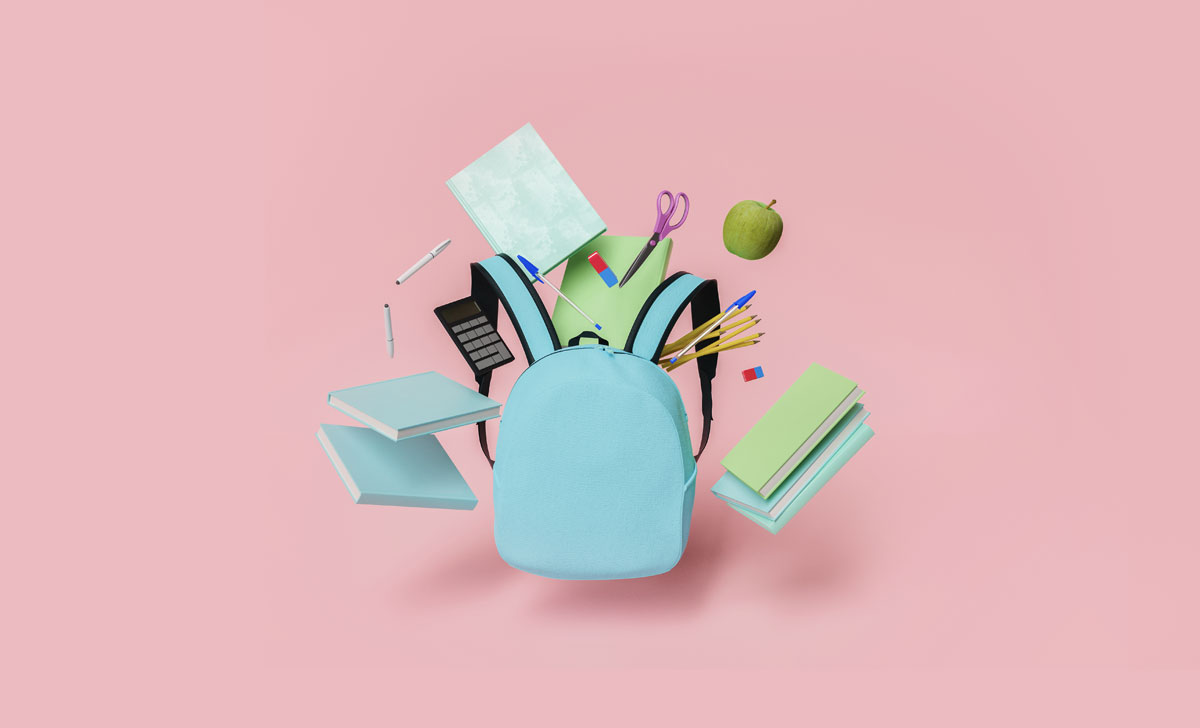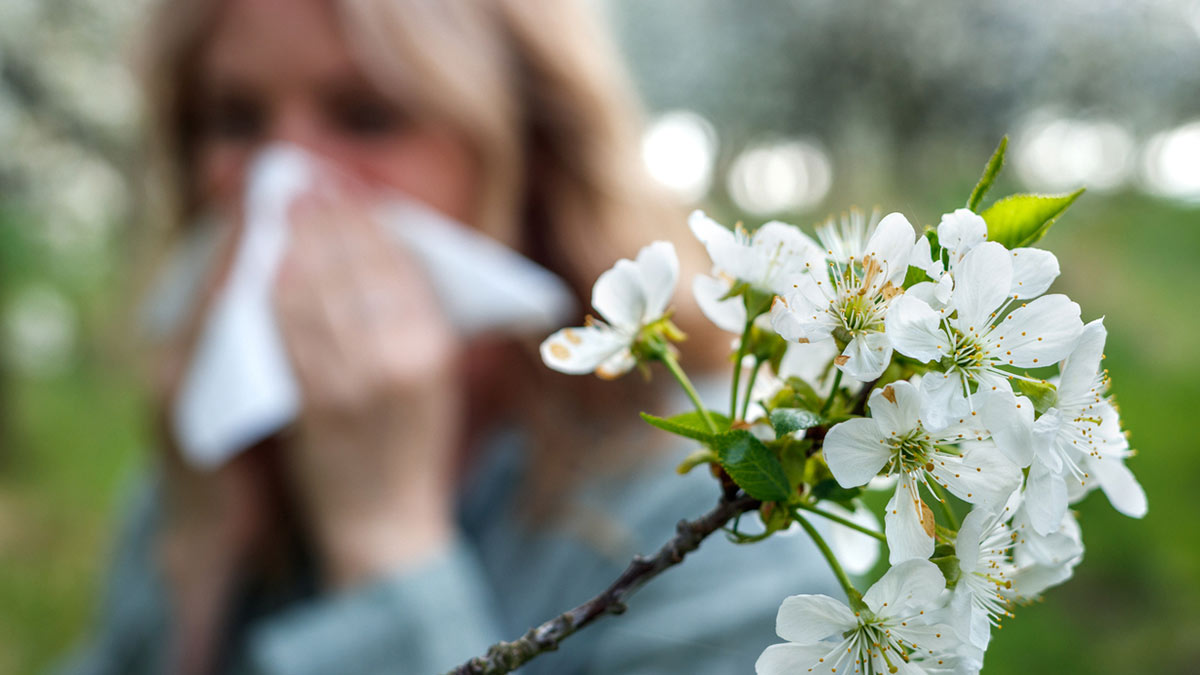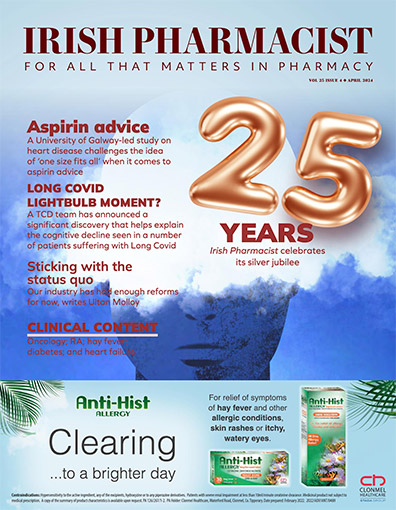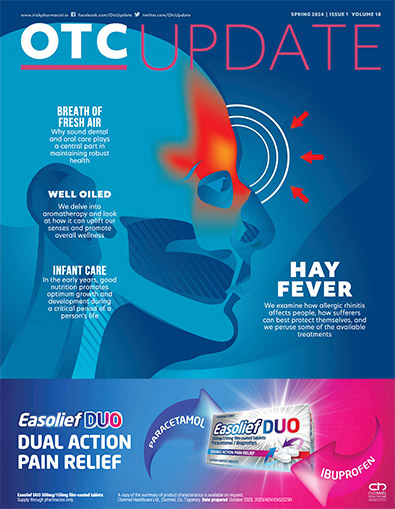Pharmacists Are Perfectly Positioned To Offer Advice And Product Recommendations For Parents And Their Children As The New School Term Starts.
In preparation for back-to-school time, many families will visit pharmacies to stock-up on products and seek advice on how best to prepare for the transition back into term time. Preparing children for the return to the classroom includes optimising nutrition and immune function, and putting in place a sleep routine, which may not have been present during the holiday months. Where relevant, the pharmacist and pharmacy team can also check with the parent or caregiver if the child has sufficient supply of their medications, especially for items like adrenaline autoinjectors for anaphylaxis, and inhalers for asthma. Pharmacy staff are ideally positioned to offer advice about and products for enhancing nutrition, immunity, and sleep routines, and practical tips for things like head lice treatment.
NUTRITION
A balanced, nutritious diet is crucial to supply adequate vitamins, minerals, fatty acids, and other nutrients to the body.1 For schoolchildren, eating breakfast is important. A systematic review2 looking at the effects of eating vs not eating breakfast on children and adolescents found positive effects of eating breakfast on measures of cognitive performance (attention and memory), academic achievement, quality of life and wellbeing, and morbidity risk factors (cardiorespiratory fitness and adiposity). Supplements that may be helpful for schoolchildren include polyunsaturated fatty acids (PUFAs), which include docosahexaenoic acid (DHA) and eicosapentaenoic acid (EPA). Results of a systematic review3 suggested that daily supplementation of ?450 mg DHA + EPA per day had a positive effect on cognition. Emerging evidence also suggests that adequate intake of PUFAs might be associated with better sleep quality.4
The minerals zinc, copper, selenium, iron, and chromium are crucial in increasing the immunity due to antiviral properties
Having healthy eating habits during adolescence helps reduce the risk of nutrient excess or deficiency, and also lowers the risk of developing chronic non-communicable diseases.5 A multivitamin or similar supplement is not usually necessary in healthy diets, however, many people still like to use these to ensure there are no nutritional gaps. As long as the product is good quality, designed for the child’s age group, and doesn’t provide more than 100 per cent of the RDA of the vitamins and minerals, there should be no safety issues.1
IMMUNITY
Many infections are highly contagious and easily transmissible. The best way to prevent transmissible infections is, as with Covid-19 measures, to practice self-sanitisation, social distancing, and to enhance immunity, ie, through dietary measures, like making sure children eat a variety of fruit and vegetables.1 A balanced, nutritious diet is vital to ensure adequate quantities of vitamins, minerals, fatty acids, and other compounds. Vitamins and minerals all play important roles in mechanisms which can enhance immunity, including:
- Vitamin C: There is some research evidence to show that high doses can increase resistance against many viruses and bacterial infections and reduce cold and flu symptoms in both adults and children.
- Vitamin D: This has been reported to be useful against the common cold, acting as a physical barrier against invading virions, and aiding both innate and adaptive immunity against the virus.
- The minerals zinc, copper, selenium, iron, and chromium are crucial in increasing the immunity due to antiviral properties.

Some fatty acids can inactivate microbes: PUFAs damage microbial cell walls, which results in membrane lysis. PUFAs are abundantly available as omega 3 fatty acids in fish oil, and in supplements.
In addition to multivitamin supplements, there are many products containing herbal medicines that are potential immune boosters. A Cochrane review7 of the use of echinacea products in treating colds did not identify strong and significant benefits. There is potentially some weak benefit from some of these products: Results of individual prophylaxis trials consistently show positive trends, although it is difficult to define their real-life impact and relevance.
Products containing elderberry or elderflower extract are also popular for boosting immune function. Elderberry contains anthocyanins, a subset of flavonoids, which may have immunomodulating and possibly antiinflammatory effects. A systematic review8 looking at the effects of elderberry supplementation for the treatment and prevention of colds and influenza suggested that this may result in shorter and less-severe illness compared to placebo, and it does not appear to be associated with serious adverse effects. More studies are required to further quantify these effects.
HEAD LICE
Head lice are very common in young children and are frequently spread in schools.
Unfortunately, there is no solid evidence that any product is able to prevent head lice, and some may irritate the scalp. Head lice spread through head-to-head contact and live in both clean and unwashed hair. The best way to stop lice spreading is to avoid head-to-head contact, and keep long hair tied back. They can cause itchiness, and may be felt moving in the hair. The only way to definitively diagnose head lice is if live lice, or eggs (nits), are identified.9 If spotted, they should be treated immediately: Everyone in the home with active infection should be treated on the same day. Multiple treatment options for head lice are recommended by the HSE, described below.
WET COMBING
This is recommended as first-line treatment by the HSE, with reported cure rates of 57 per cent. A head lice comb should be used on the hair (wet hair with conditioner is generally more effective than dry hair). The whole of the head of hair should be combed from roots to ends, and this should be repeated every four days for at least two weeks, and continued until no lice are seen for three consecutive sessions.9,10
MEDICATED LOTIONS/SPRAYS
If lice persist after two weeks, lotions or sprays that kill the lice are available: Isopropyl myristate (Full Marks Solution), dimethicone (Hedrin), permethrin (Lyclear), and malathion (Derbac). A second treatment is required seven days after each initial treatment. The following cure rates (based on UK data) should inform treatment choice and advice:10
- Isopropyl myristate: 82%.
- Dimethicone: 70%.
- Malathion: 33%.
- Permethrin: 13%
ROUTINE AND SLEEP
Sleep is vital for learning, memory processes and school performance in young people. Poor and fragmented sleep, late bed-times and early awakenings significantly impair learning, school performance and neurobehavioural functioning. There is evidence to demonstrate an association between sleep and the consolidation of cognitive performance, which is required for processes like abstract reasoning, goal-directed behaviour and creative processing, among others.11 Both sleep quality and sleep duration are correlated with sleepiness, emotional state, behaviour and cognitive function.
Table 112 provides recommended amounts of sleep for children and adolescents of different ages. While useful as a guideline, it is important to acknowledge that sleep requirements vary among children and just from day-to-day.13
The only way to definitively diagnose head lice is if live lice, or eggs (nits), are identified
For teens, adequate sleep is important not only for attention, memory and analytical thought, but also for creativity, emotional health, physical health and development, avoidance of risky behaviour, and decision-making. There is some research evidence supporting a link between parents setting a firm bed-time with teens getting more sleep and experiencing less daytime drowsiness.13
‘Sleep hygiene’ refers to the lead-up and routine around bedtime.14 Good sleep hygiene practices can help both children and adolescents to settle to sleep and to stay asleep. There are several things that parents can do to help — here are some ideas of areas to consider.
- Caffeine — in tea, coffee, cola and energy drinks — is a stimulant that can prevent sleep. If the child drinks these, try to limit intake and avoid altogether after lunchtime.
- Eating a large meal near bed-time can prevent sleep. Some foods, however, can be helpful in helping a child settle to sleep, ie, a drink of warm milk.
- If a child has been physically inactive during the day, they may find it difficult to fall asleep at night. Where possible, encourage the child to take part in sports and play outside to burn-off energy. Even going for a walk in the fresh air can help. Exercise should be avoided directly before bed-time because the heat created by muscles can prevent sleep.
- The child’s sleeping environment is important: It should be a safe and secure place, but not a place of play. A night-light might help a child feel safe, but for others, total darkness may be better for sleep. Room temperature and noise levels should be at a comfortable level.
- Having a consistent bedtime routine and set time can help a child wind down, with activities such as a warm bath/shower or reading a story. Going to the toilet as the last task before getting into bed can help to avoid needing to get up at night-time.
- Ideally, the use of electronic devices (TVs, phones and tablets) should not be used in the hours before bed, because they produce light that suppresses sleep hormones.
- If a child is routinely waking at night, it is important that they learn to self-settle. This can be difficult to enforce, but if possible, if a child seeks the parent out at night-time, the Sleep Foundation recommends that they should be led quietly back to bed without engaging in conversation. A night-light, cuddly toy or baby monitor may help them feel safe and self-soothe. In the morning, praise for staying in bed at night, and the use of a reward chart, can help reinforce good behaviour.
SUMMARY
When people seek back-to-school advice in the pharmacy, this opens up an opportunity to discuss the approaches that can help with the transition back into the classroom. Pharmacies are trusted to provide practical advice and product recommendations that are evidence-based.
Donna Cosgrove graduated with a BSc in Pharmacy from the Royal College of Surgeons in Ireland. She then returned to university to complete a MSc in Neuropharmacology, which led to a PhD and further research investigating the genetics of schizophrenia. Over the years Donna has worked in hospital, research and community pharmacy settings, but currently works as a community pharmacist in Galway and as a clinical writer.
References
1. Thirumdas R, Kothakota A, Pandiselvam R, Bahrami A, & Barba FJ (2021). Role of food nutrients and supplementation in fighting against viral infections and boosting immunity: A review. Trends in Food Science & Technology, 110, 66-77.
2. Lundqvist, M, Vogel NE, & Levin LÅ (2019). Effects of eating breakfast on children and adolescents: A systematic review of potentially relevant outcomes in economic evaluations. Food & Nutrition Research, 63.
3. van der Wurff IS, Meyer BJ, & de Groot, RH (2020). Effect of omega-3 long chain polyunsaturated fatty acids (N-3 LCPUFA) supplementation on cognition in children and adolescents: A systematic literature review with a focus on n-3 LCPUFA blood values and dose of DHA and EPA. Nutrients, 12(10), 3115.
4. Patan MJ, Kennedy DO, Husberg C, Hustvedt SO, Calder PC, Middleton B, … & Jackson, PA (2021). Differential Effects of DHA-and EPA-rich oils on sleep in healthy young adults: A randomized controlled trial. Nutrients, 13(1), 248.
5. Prangthip P, Soe YM, & Signar JF (2021). Literature review: Nutritional factors influencing academic achievement in school age children. International Journal of Adolescent Medicine and Health, 33(2) doi:10.1515/ ijamh-2018-0142.
6. National Center for Complementary and Integrative Health (2019). Using Dietary Supplements Wisely. Available https://www.nccih.nih.gov/health/ using-dietary-supplements-wisely.
7. Karsch?Völk M, Barrett B, Kiefer D, Bauer R, Ardjomand?Woelkart K, & Linde K (2014). Echinacea for preventing and treating the common cold. Cochrane Database of Systematic Reviews, (2).
8. Wieland LS, Piechotta V, Feinberg T, Ludeman E, Hutton B, Kanji S, … & Garritty C (2021). Elderberry for prevention and treatment of viral respiratory illnesses: A systematic review. BMC Complementary Medicine and Therapies, 21(1), 1-15.
9. Health Service Executive (2021). Head Lice and Nits. Available https://www2.hse.ie/conditions/ head-lice-nits/.
10.Health Service Executive (2016). Headlice – Antibiotic Prescribing. https://www.hse.ie/eng/services/ list/2/gp/antibiotic-prescribing/ conditions-and-treatments/skin-soft-tissue/headlice/.
11. Dewald JF, Meijer AM, Oort FJ, Kerkhof GA, & Bögels SM (2010). The influence of sleep quality, sleep duration and sleepiness on school performance in children and adolescents: A meta-analytic review. Sleep Medicine Reviews, 14(3), 179-189.
12. National Health Service – Great Ormond Street Hospital for Children. (2020). Sleep hygiene in children and young people: information for families. Available https://media.gosh.nhs.uk/ documents/Sleep_hygiene_F1851_ FINAL_Jun20.pdf.
13.Suni E (2022). Sleep Foundation: How Much Sleep Do Babies and Kids Need? Available https://www. sleepfoundation.org/children-and-sleep/how-much-sleep-do-kids-need.
14.Suni E (2022). Sleep Foundation: Teens and Sleep. Available https://www.sleepfoundation.org/ teens-and-sleep.







